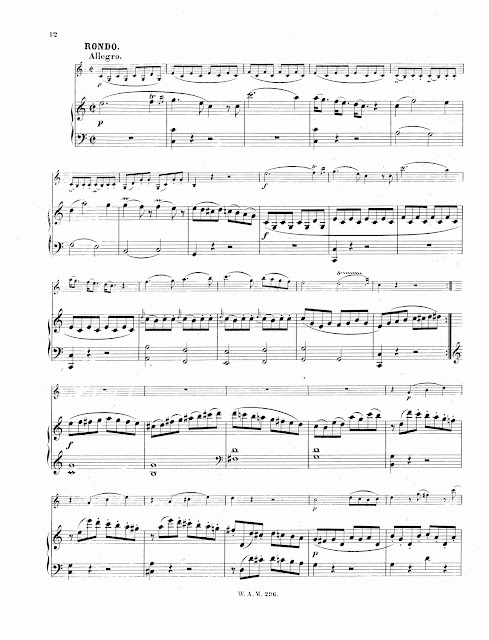CCLXXII. MOZART, Wolfgang Amadeus (1756-1791)
Mozart certainly set the template for such sonatas of the future Beethoven, who reversed the title for Violin and Piano.
This lovely Mannheim style work was written when the Young Genius had reached the ripe old age of 22. He originally dedicated it to the 17-year-old daughter of his landlord, but ultimately the honor went to another love, Josepha Barbara Auernhammer.
He may have been in love, but was still critical:
"Almost every day after dinner I am at H: v: Auernhammer's -- The Miss is a monster! -- plays delightfully though, however, she lacks the genuine fine and lilting quality of cantabile; she plucks too much."
First Movement
Both instruments begin by outlining a descending C Major triad, but the piano gets the flourishes.
The development begins -- typically enough -- in the dominant G Major:
but then he introduces some astonishing modulations:
beginning in the parallel minor and using secondary dominants (V of V / V of ii / V of vi, etc.) until gracefully returning to the major.
Second Movement
Ah, young love.
The three-against-four rhythm would qualify as cantabile lilting.
Third Movement
A typical rousing rondo:









No comments:
Post a Comment